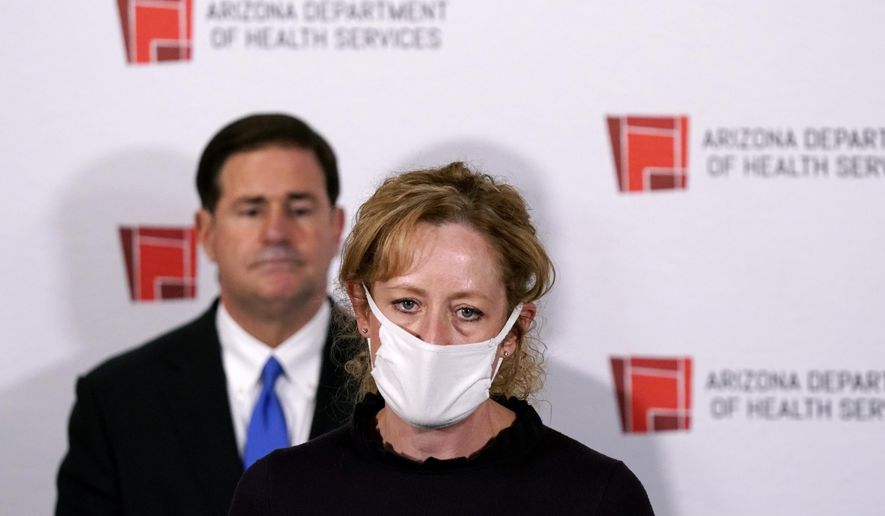PHOENIX (AP) - Arizona expects to get enough doses of new coronavirus vaccines by the end of the year to inoculate more than 383,000 health care workers and long-term care facility residents, the state’s health director said Friday.
Health Services Department Director Dr. Cara Christ said the federal government has allocated those doses of vaccines made by Pfizer and Moderna if the U.S. Food and Drug Administration gives the new vaccines emergency use authorization.
Both vaccines were shown to be more than 90% effective, but they require a second dose within a month. Christ said the federal government will hold back that second dose for later delivery.
The state is following federal guidelines and prioritizing health care workers and residents of long-term care facilities such as nursing homes for the first available doses. Once those groups receive the vaccine, additional doses will be allocated to other groups according to their slot on the priority list.
Next in line are teachers and other essential workers, followed by older Arizonans or people otherwise at higher risk of serious cases of COVID-19. It will be months before all Arizonans who want to get a vaccine will be able to sign up to receive one. The state has about 7.3 million residents.
“We anticipate hundreds of millions of doses (nationally) by like March or April, and that’s when we feel that it will finally be open to where we’d be able to get to the general population,” Christ said.
The vaccine’s expected rollout in mid-December comes after the state has seen nearly 7,000 Arizonans die from the virus since March.
Christ’s department on Friday reported more than 5,000 new known COVID-19 cases for the second straight day. The numbers come as the state deals with a surge of virus cases that has led to a growing number of hospitalizations. The number of available intensive care unit beds is now below 10% statewide.
Health Services reported 5,680 additional known cases and another 64 deaths, increasing the state’s totals to 352,101 cases and 6,885 deaths.
Arizona on Thursday had reported 5,442 cases, which for 24 hours was the highest number of cases reported in one day during the pandemic except for the record 10,322 cases reported Tuesday, which officials say was inflated by holiday weekend reporting delays.
The number of infections is thought to be far higher than reported because many people have not been tested, and studies suggest people can be infected with the virus without feeling sick.
Arizona’s cases, deaths and hospitalizations were steadily rising before Thanksgiving, when health officials said gatherings and travel were expected to further spread the virus.
The state’s coronavirus dashboard said only 9% of ICU beds were available Thursday as the share of ICU beds used by COVID-19 patients reached 38%.
Hospital officials have said the outbreak will exceed hospital capacity this month.
Christ said the arrival of a vaccine that appears to be more than 90% effective is a big development. But she said residents need to continue to take precautions such as avoiding large crowds, wearing masks in public and social distancing.
“A vaccine is a light at the end of the tunnel, but we have a long way to go before there’s enough vaccine for everybody who wants one,” Christ said.
Also Friday, the Pima County Board of Supervisors voted to take several steps to boost efforts to slow the spread of the virus.
They include adding penalties of $50 for people who ignore face mask requirements and the potential suspension of business permits if restaurants or public pools have more than one violation of health and safety rules. The board also imposed rules requiring mandatory reporting to the county Health Department by business owners if an employee has a positive virus test. That’s needed because county officials say they have learned of outbreaks at businesses only through contact tracing.
The supervisors also continued their voluntary 10 p.m.-to-5 a.m. curfew, which is designed to discourage late-night parties and socializing where the virus can spread.
___
Associated Press writer Paul Davenport contributed to this report.




Please read our comment policy before commenting.